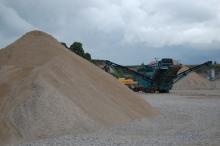The Construction Products Regulation (CPR), which repeals the Construction Products Directive (CPD), came into force on 24 July, 2011, and applies from 1 July 2013
The CPR AIMS at clarification of the basic concepts and of the use of CE marking; simplification of the procedures, so as to reduce the costs incurred by enterprises, in particular SMEs, and increased credibility for the whole system.
The key concept of the CPR is the declaration of performance (DoP), which is replacing the declaration of conformity (DoC) from the previous CPD.
For every construction product covered by a harmonised standard or a European Technical Assessment, the manufacturer will draw up a declaration of performance with the intended use of the construction product. Since 1 July 2013, all construction products placed on the EU market have to be CE marked.
The CPR (Article 60) foresees a delegated act (DA) to define the conditions on which a declaration of performance may be electronically processed, in order to make it available on a website.
The Commission’s Delegated Act (adopted September 2013) will be transmitted to the
Meanwhile, manufacturers can continue their practice to provide information about the performance of their products on a website. It is noted that a batch of the same product supplied to a single user can be covered by a single DoP and that a paper copy of the DoP should be supplied if the recipient of the product requests it.
What is a delegated act?
The Treaty of Lisbon creates a new category of legal act: delegated acts. The legislator delegates the power to adopt acts amending non-essential elements of a legislative act to the
For example, delegated acts may specify certain technical details or they may consist of a subsequent amendment to certain elements of a legislative act. However, this delegation of power has strict limits. In effect, only the Commission can be authorised to adopt delegated acts. Furthermore, the legislator sets the conditions (Article 290 of the Treaty) under which this delegation may be implemented.
Delegated act in CPR
Article 60 of the CPR, for the purposes of achieving the objectives of the Regulation, in particular removing and avoiding restrictions on making construction products available on the market, the following matters shall be delegated to the Commission, (...) inter alia:
(b) the conditions on which a declaration of performance may be electronically processed, in order to make it available on a website in accordance with Article 7;
(e) the adaptation of Annex III, table 1 of Annex IV, and Annex V in response to technical progress.
Delegated acts on DoP on a website, on Annex III (Declaration of Performance) and Annex V (Assessment and Verification of Constancy of Performance) meetings
Over July and September, the European Commission organised meetings on the Delegated Act (DA) on DoP on a website, on Annex III and Annex V.
The
The Delegated Acts on DoP on a website should be published in early November. The European Commission will draft the conditions to use a website but will not address technical solutions available to fulfil those condition, as a DA should not obstruct any technological development. A DA may not modify the responsibilities of the market surveillance authorities.
Following comments, the DA on Annex III and Annex V should be published by the beginning of 2014.
Next Steps
UEPG Technical Committee (under the active chairmanship of Jean-Marc Vanbelle (FEDIEX ), in cooperation with Construction Products Europe, is monitoring the issue. In September/October, UEPG will report on challenges encountered over the first phase of the implementation of the CPR, and send comments on Delegated Acts proposed.
References
CPR/EC Website/
• For further information, you can contact the UEPG Secretariat: Email: %$Linker:
the association’s website: %$Linker:







